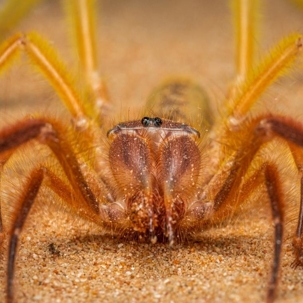Are Camel Spiders Poisonous?
Camel spiders — also known as wind scorpions or sun spiders — are not poisonous and do not produce venom. Despite their fearsome appearance and fast movements, these arachnids pose no serious danger to humans.
No venom glands: Unlike true spiders or scorpions, camel spiders (order Solifugae) lack venom glands. They subdue prey using powerful chelicerae (jaws) that can crush and tear insects, small lizards, or rodents.
Painful bite potential: While not venomous, a camel spider’s bite can be painful due to its strong jaws. If threatened or handled, it may bite defensively, sometimes breaking the skin.
Infection risk: The main health concern comes from secondary infection at the bite site if it’s not cleaned properly.
Myths and exaggerations: Camel spiders have been the subject of many exaggerated myths — such as being highly venomous, chasing people, or eating flesh — but these are false. They are simply nocturnal predators seeking shade or small prey.
Camel spiders are non-venomous, non-poisonous, and not a significant threat to people. Proper hygiene after any bite is usually all that’s needed.
Camel Spider Venom
Camel spiders (order Solifugae) do not possess venom—therefore, they have no venom to describe. Unlike true spiders (which belong to the order Araneae) or scorpions (order Scorpiones), camel spiders lack both venom glands and venom-delivery structures such as fangs or stingers. Here’s what this means biologically and behaviorally:
No venom glands or ducts: Anatomical studies of camel spiders confirm that their large chelicerae (jaws) are strictly mechanical tools used for crushing and tearing prey, not for injecting toxins.
Killing method: Instead of relying on venom, camel spiders subdue prey through brute strength and precision. Their jaws can saw through exoskeletons or small vertebrates, allowing them to feed efficiently without chemical aid.
Digestive process: They secrete digestive enzymes—not venom—to liquefy prey tissues externally before ingestion. These enzymes are not harmful to humans.
Human bites: If a camel spider bites in self-defense, the result is purely mechanical trauma—a painful pinch or cut that can bleed but carries no venomous effects. Any swelling or irritation afterward is from tissue damage or bacteria, not toxicity.
Camel spiders have zero venom components, no toxins, and no envenomation mechanism. Their power lies in their jaws, not in chemistry.

